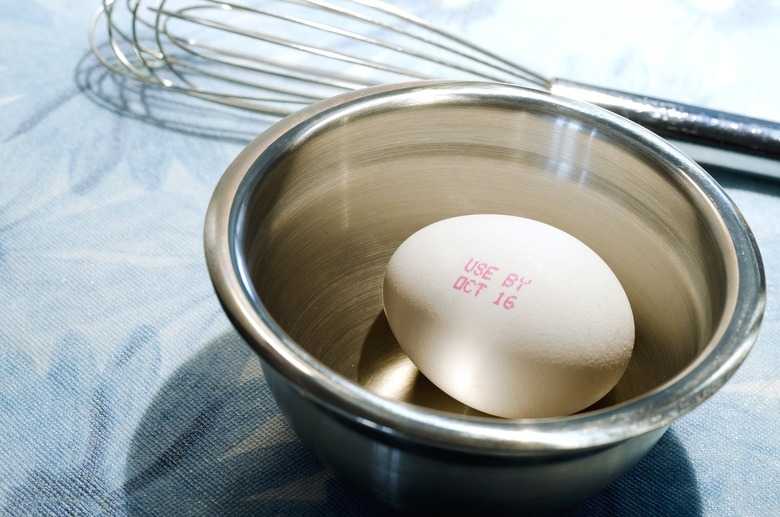Global Plan For 'Use By' Food Labels Aims To Cut Food Waste
Sometimes it's hard to tell exactly when to throw away food. The label says "Best By" yesterday's date, but the product looks and smells completely fine. Is it safe to consume, or should you chuck it in the trash?
NPR reports an estimated 133 billion pounds of food is wasted in the United States every year, and globally, food loss amounts to 1.3 billion tons. Food waste in the U.S. costs the average household $2,000 in waste per year. This is largely due to confusion over expiration dates on product labels. Once a "sell by" date passes, many of us toss out food that's perfectly safe to eat. A new initiative, announced Sept. 20, aims to make labels easier to read and, in turn, cut down on food waste across the world.
The Consumer Goods Forum — a consortium that includes big names like Walmart, Kellogg's, Nestle, and Amazon — is asking retailers and food manufacturers to simplify date labels. Currently, there are more than 10 different phrases on food packaging, such as "Sell By," "Use By," "Expires On," "Best Before," "Better If Used By," and "Best By."
The first term, "BEST If Used By," describes the quality of a food product meant to convey that "the product may not taste or perform" its best after the specified date, "but it is safe to use or consume," the Food Marketing Institute said in a press release.
The second phrase is "Use By," which applies to "products that are highly perishable and/or have a food safety concern over time." These products "should be consumed by the date listed on the package — and disposed of after that date."
With simplified labels, the forum hopes to reduce global food waste by 50 percent by 2030. This could hugely aid hunger efforts, as the food wasted in America each year could provide three meals a day for 172 million people, and lift 10 times that amount out of hunger. Find this and more in the 10 mind-blowing facts about food waste in America.
